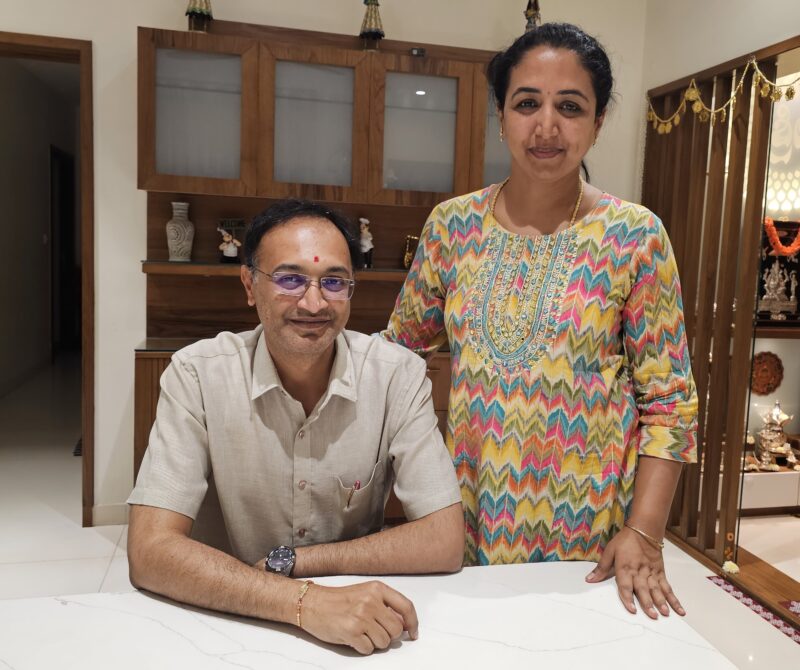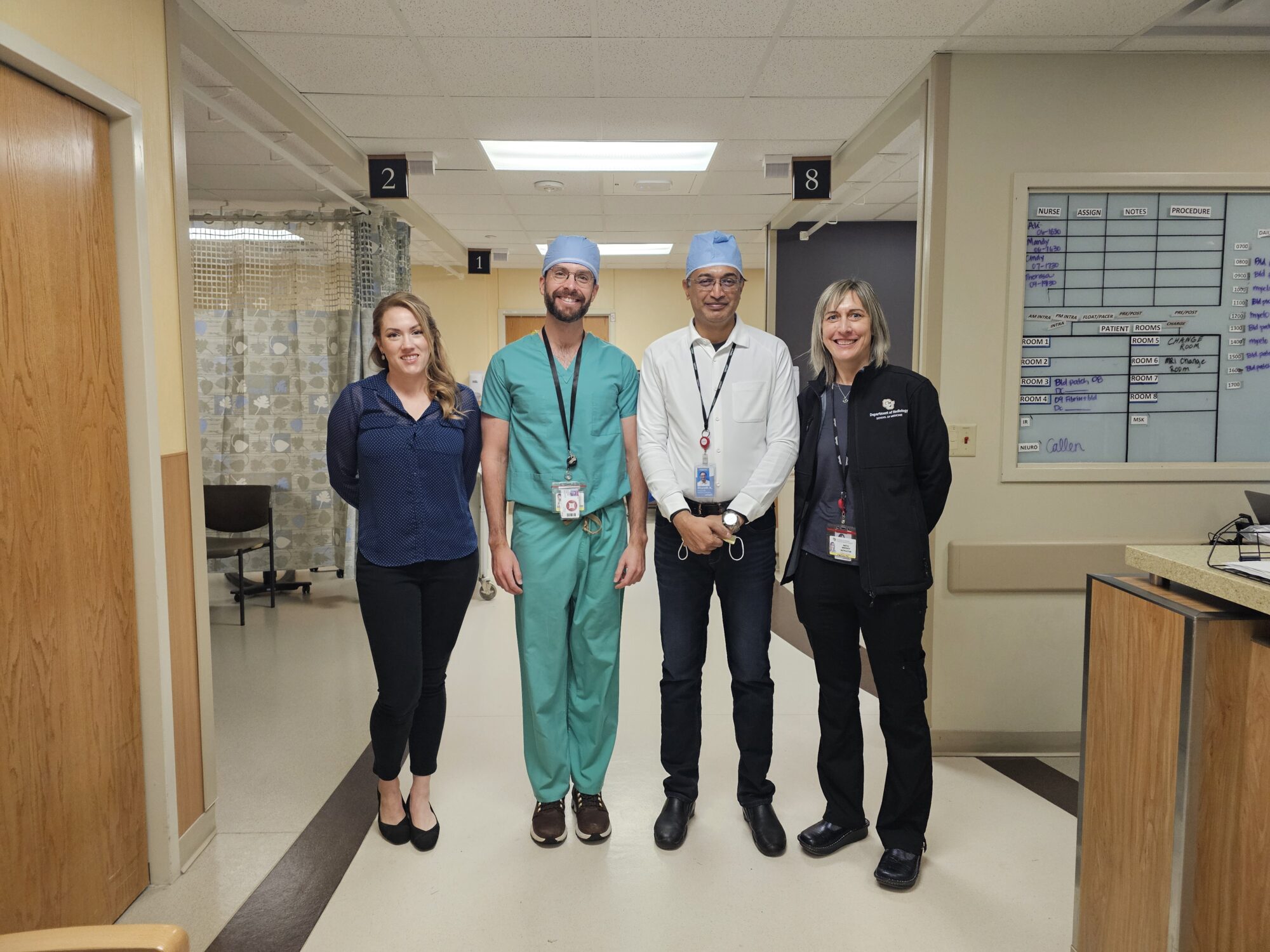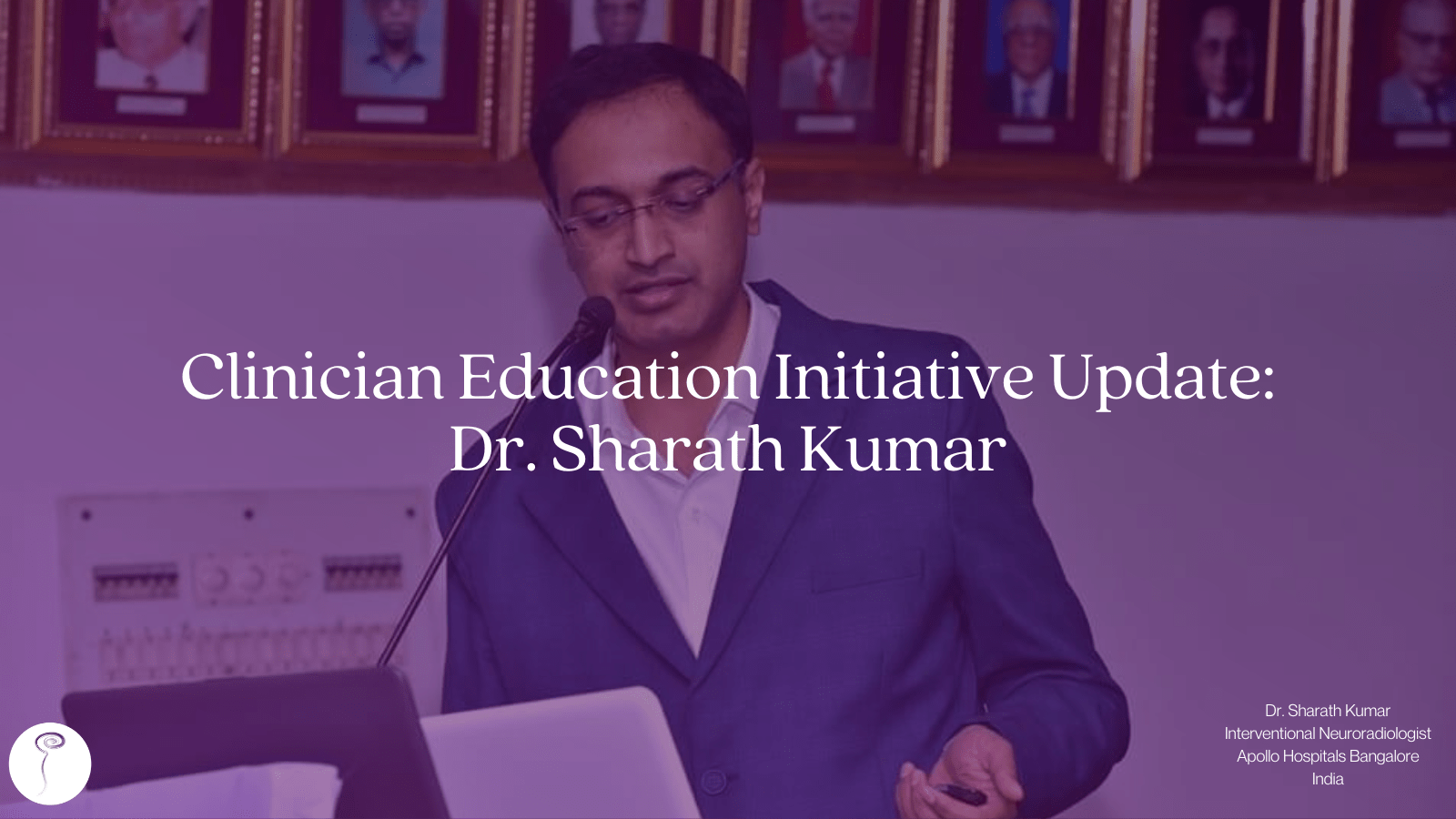Close to Home
Dr. Sharath Kumar had been a practicing neuroradiologist for nine years when he encountered the patient that would change his life. She was 39 years old, presenting with sudden, severe pain in her neck and at the base of her skull. The pain seemed to improve somewhat when she laid flat and worsened when she was upright. Though she had tried to find care, she had yet to locate a doctor who was able to diagnose her and treat her debilitating symptoms.
Dr. Kumar understood fairly quickly that this patient was exhibiting symptoms of intracranial hypotension, a loss of cerebrospinal fluid volume due to a spinal cerebrospinal fluid (CSF) leak. A spinal CSF leak happens when the spinal dura mater — a tough membrane that holds cerebrospinal fluid in place around the brain and spinal cord — has a hole, tear, or other defect, allowing cerebrospinal fluid to leak out of this enclosed space. This results in a low volume of CSF remaining around the brain and spinal cord, leading to a wide variety of symptoms.
Dr. Kumar was unsure of what to do, but he felt compelled to help this woman who had been turned away by doctor after doctor, unable to find suitable treatment. But he was also concerned, because he, too, was in uncharted territory.
Although he had heard of spinal CSF leak during his medical training, this was the first patient he’d seen affected by it. He had never studied techniques to treat it, and he didn’t personally know another doctor in his country who had, either. But as he listened to this patient and watched her suffer through her pain, he knew he had to do something.
After all, she was his little sister.
Scaling the Learning Curve
Dr. Kumar immersed himself in a crash course of self-education, consulting with fellow physicians in person and via email, doing online research, reading as many scientific articles as he could find, and watching educational videos he found online. “It was incredibly stressful and challenging,” he said about treating his family member. “I spent many sleepless nights grappling with uncertainty around the treatment strategies.”
For many people with spinal CSF leak, when conservative management such as bedrest does not help, an epidural blood patch is typically the next step. During an epidural blood patch, a patient’s own blood is injected into the epidural space (the space just outside the dura within the spinal canal), forming a temporary Band-Aid like “patch” over the damaged dura and stimulating healing in the area.
Epidural blood patches can be performed even when the exact leak location is not known. These kinds of patches are called non-targeted patches, and most are performed at the lumbar level. When the leak location is known, an epidural blood patch can be done directly at the site of the leak. This is called a targeted patch.
Dr. Kumar had some good news for his sister: her MRI had revealed the location of her leak, which meant she could be treated with a targeted epidural blood patch. He also had some bad news. Her leak was large, and in a very challenging location: it was a substantial ventral tear (meaning toward the front of her body) along the lower cervical spine.
He had never performed an epidural blood patch of any kind, let alone a cervical patch, where the epidural space is narrower, resulting in a higher risk profile for patches in that area versus elsewhere in the spine. Dr. Kumar read that cranial nerve palsy, seizures, spinal cord compression were all a possibility, even in the most experienced hands.
“Magical”
Still, he was undeterred. With no other doctor able to give his sister the treatment she needed, he knew he was her only hope.
He consulted with anesthesiologists and senior colleagues and meticulously planned his approach to treating her leak, reviewing it over and over in his mind until it was finally time to take the leap.
In May of 2020, with the help of a neuro-anesthesiologist colleague, he performed a cervical epidural blood patch at C7 under fluoroscopy. The outcome was everything he had hoped for—his sister experienced a recovery she described as “magical” and has been free of spinal CSF leak symptoms ever since.

Dr. Sharath Kumar and his sister
This transformative experience became the catalyst for Dr. Kumar’s broader mission. Witnessing his sister’s experience with spinal CSF leak opened his eyes to the need for research, education, and awareness around the condition. And with his country’s population of 1.5 billion, Dr. Kumar knew that there were likely many other spinal CSF leak patients in need of diagnosis and treatment.
In the years following the success of his sister’s procedure, Dr. Kumar treated more than 50 spinal CSF leak patients. He worked with his colleagues to educate others in his institution about spinal CSF leaks and was able to secure access to an ultrafast CT for imaging his patients. But to him, this was just the beginning. He was hungry to learn more, and to help more people.
An educational opportunity
Driven by this vision, in 2023 Dr. Kumar applied for a grant from the Spinal CSF Leak Foundation’s Clinician Education Initiative. He hoped to either be able to shadow and learn from an established expert specialist, or at the very least attend an international conference where he could meet other doctors who were passionate about spinal CSF leaks.
His grant application was accepted, and he was in luck, because its terms allowed him to meet both of those goals. He traveled to Denver, Colorado, where he attended the Spinal CSF Leak Foundation’s “Bridging the Gap” conference and spent a week observing Dr. Andrew Callen’s spinal CSF leak clinic at the University of Colorado Anschutz.
Reflecting on his experience at the conference, where both patients and physicians gave presentations on spinal CSF leak, Dr. Kumar spoke about the suffering he could hear in patient’s voices as they shared their perspectives, and the importance of listening to them: “Understanding the pain of our patients as a caregiver helps to build empathy and inspires us to give our best.”
He found his week of observation at the University of Colorado to be “an enlightening and enriching experience.” At Dr. Callen’s clinic, he absorbed invaluable insights, learning about image-guided percutaneous procedures and multi-level epidural needle placements, and also gained a deeper understanding of surgical interventions for spinal CSF leak patients. His time there not only broadened his knowledge but also inspired him to establish a dedicated clinic for spinal CSF leak patients in India.

Dr. Sharath Kumar with the team at UC Colorado Anschutz (left to right: Dr. Samantha Petrucci, Dr. Andrew Callen, Dr. Sharath Kumar, NP Nadya Andonov)
A renewed purpose
Since returning home, Dr. Kumar has worked hard to incorporate what he learned into his current practice. He now feels more confident performing CT guided techniques, incorporating outpatient care into his practice, using glue for percutaneous injections, and reading MRI images of suspected cases.
Dr. Kumar’s journey is a testament to the determination and dedication that define the best in the field. As he continues to push the boundaries of spinal CSF leak treatment in India, his story stands as a beacon of hope for patients and a source of inspiration for fellow practitioners around the world. The Spinal CSF Leak Foundation is grateful to have supported Dr. Kumar in his continuing education.


